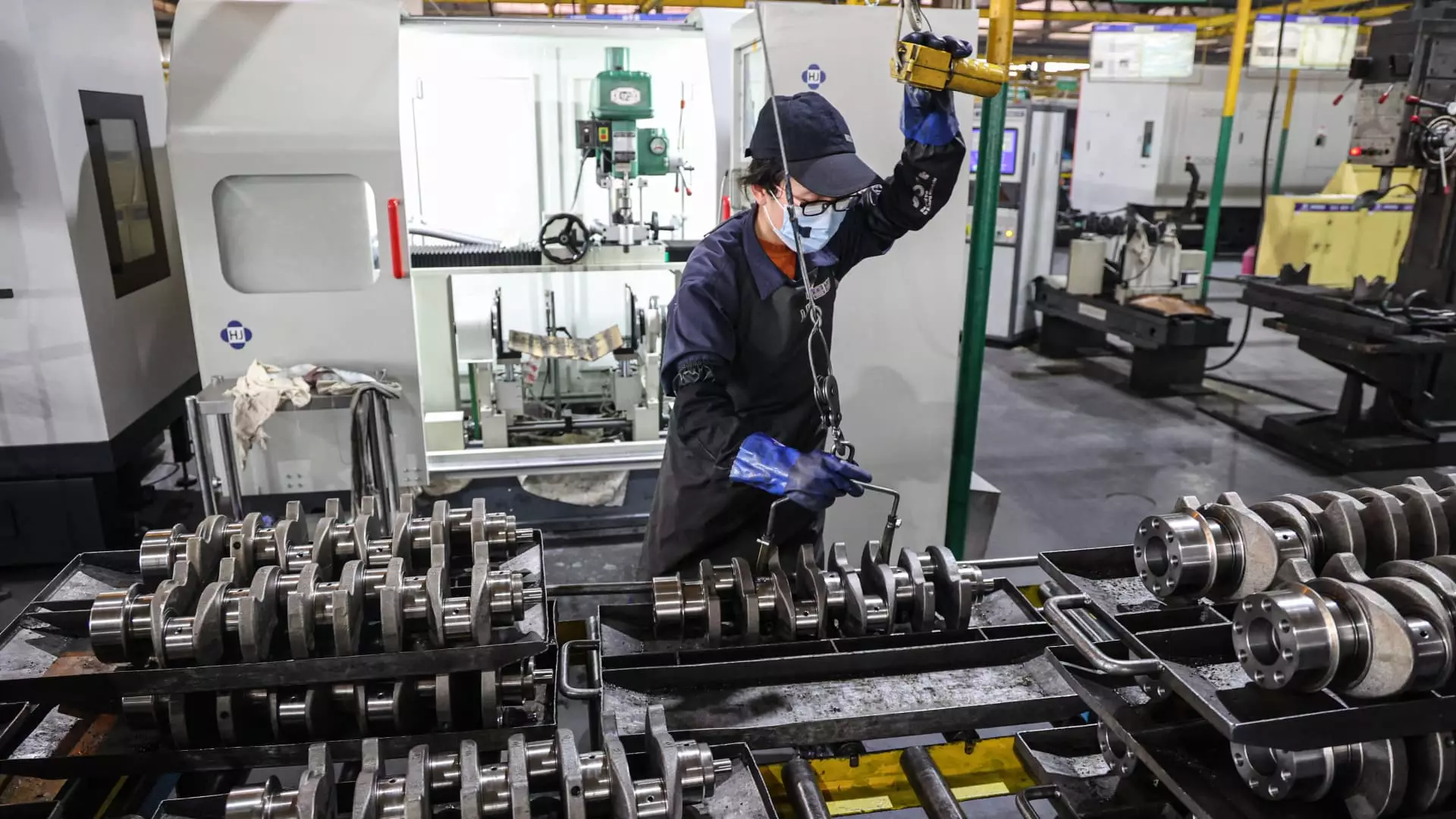In the world of economics, numbers tell a story, and the recent rise in China’s industrial profits serves as a fascinating chapter in the ongoing saga of global trade dynamics. Official data from the National Bureau of Statistics revealed that profits among major industrial players in China rose by 3% in April compared to the previous year, marking the second consecutive month of profits growth. This figure, an uptick from March’s 2.6%, is noteworthy amid a storm of external pressures, particularly from the United States in the form of punitive tariffs. As we peel back the layers of this seemingly optimistic trend, it invites a critical examination of China’s economic resilience against the backdrop of international tensions.
Defiance in the Face of Tariffs
Last month, U.S. President Donald Trump introduced staggering tariffs of 145% on imports from China, hoping to stifle the economic behemoth by choking its access to the American market. What was intended as a severe blow has instead unfolded into a lesson in economic adaptability. Despite the barrage of duties, Chinese exports have proven remarkably nimble, finding alternative markets that have cushioned the effects of these tariffs. This resilience begs the question: are we witnessing a moment of Chinese ingenuity, or merely a temporary blip in an ongoing conflict?
While the U.S. and China may have recently agreed to lower tariffs, the reality is that geopolitical tensions have shifted the nature of trade itself. Critical views suggest that this arrangement might merely serve as a veneer of cooperation between two rivals rather than a substantial step toward an amicable resolution. The world’s economic stage is set for a battle where neither side is willing to back down entirely, and therein lies a troubling uncertainty for businesses and consumers alike.
Sectoral Variations: A Tale of Two Realities
Diving deeper into the sector results, we see a significant disparity between state-owned enterprises and private or foreign firms. State-owned industries reported a significant decline in profits—down 4.4% from last year—while private sectors experienced a 4.3% increase. This stark contrast raises vital questions about the structure and efficiency of state-controlled entities versus their more agile counterparts. Are state-run businesses becoming shackles on the economy, or are they victims of an external climate that favors flexibility?
On the contrary, the high-tech manufacturing sector shone brightly, with profits climbing 9% year-on-year. Industries focused on biopharmaceuticals and aircraft manufacturing made impressive gains, buoyed by innovations and consumer subsidies incentivizing tech upgrades. However, the mining sector paints a bleak picture, suffering a staggering 26.8% profit drop, which reflects not only the volatility of commodity prices but also the broader implications of over-reliance on traditional industries that are under siege from both international competition and domestic policy.
The Shadows of Uncertainty
Despite the apparent growth, voices like that of Weining Yu from the NBS remind us that clouds of uncertainty loom large. Persistent issues of insufficient demand and declining prices continue to cast shadows over economic optimism. China’s industrial profits may have rebounded, but they exist in a fragile ecosystem where external market pressures and domestic economic malaise threaten to unravel potential gains. The retail sales growth, stalling at 5.1%, underscores a significant supply-demand imbalance that cannot be ignored.
The figures tell a multifaceted story of an economy wrestling with both achievement and adversity. While some sectors are thriving, others are faltering, creating a patchwork of growth that underscores the complexity of the economic landscape. The notion of “resilience” touted by officials may soon be tested as the winds of change blow across the global economy.
Lessons for the Future
As we dissect these developments, it becomes increasingly clear that China’s industrial profitability is not merely a product of local enterprise but also a reflection of global economic conditions. Policymakers and businesses must navigate this intricate web of internal and external factors, lest they find themselves unprepared for the harsher realities that could emerge from ongoing trade negotiations and global tensions. The path ahead is fraught with challenges, but it is also ripe with potential for those willing to innovate and adapt.

Leave a Reply